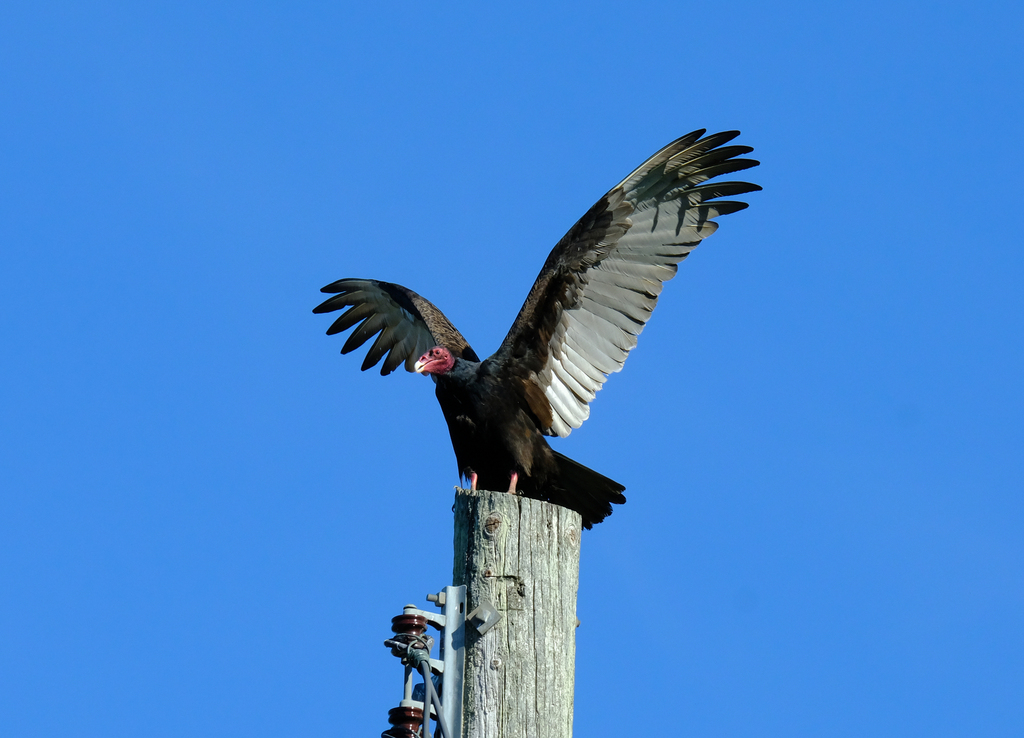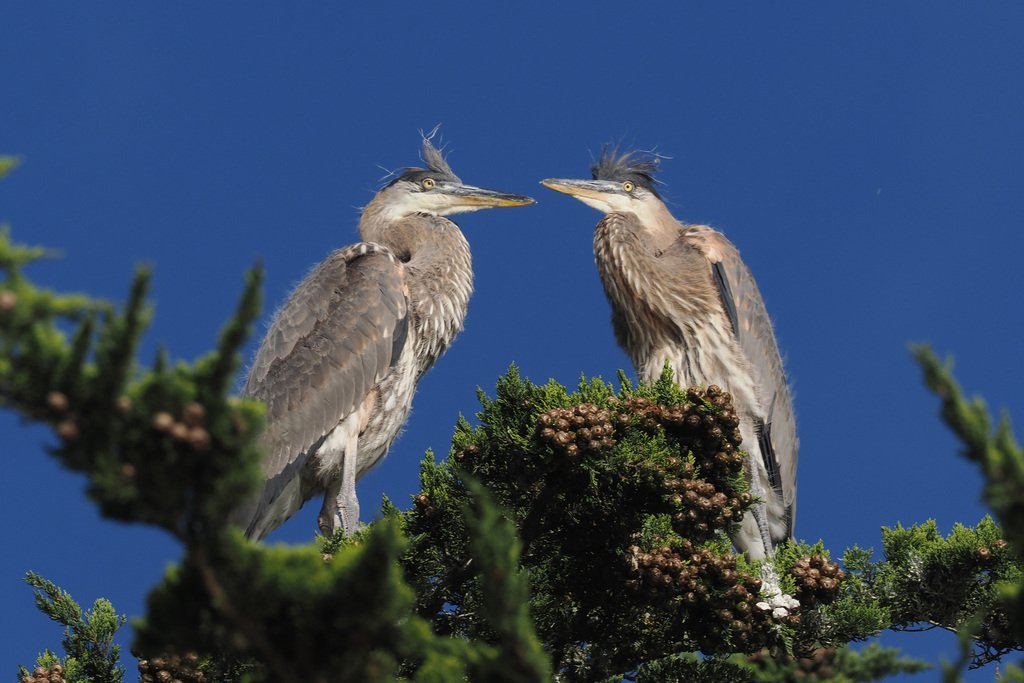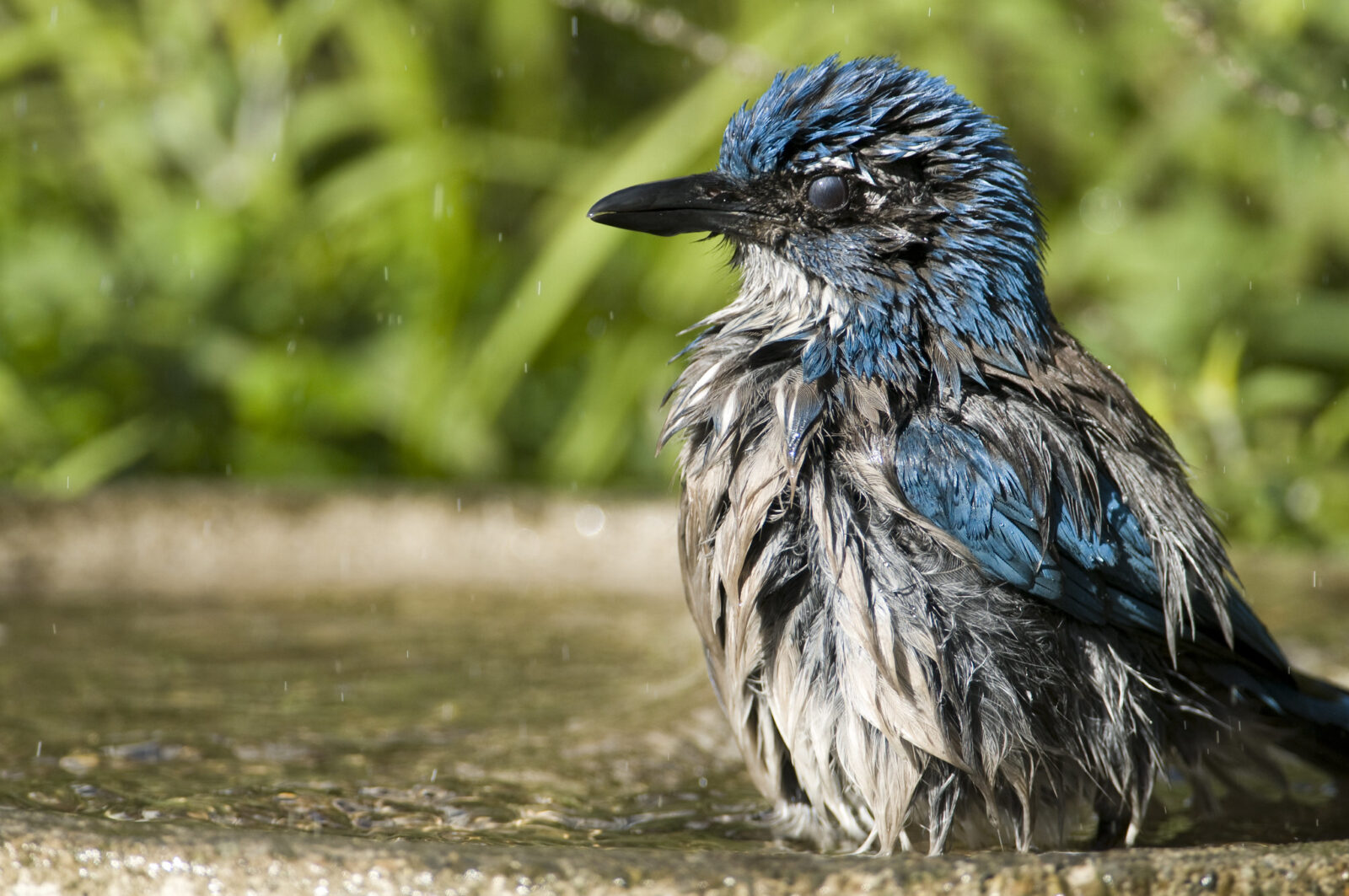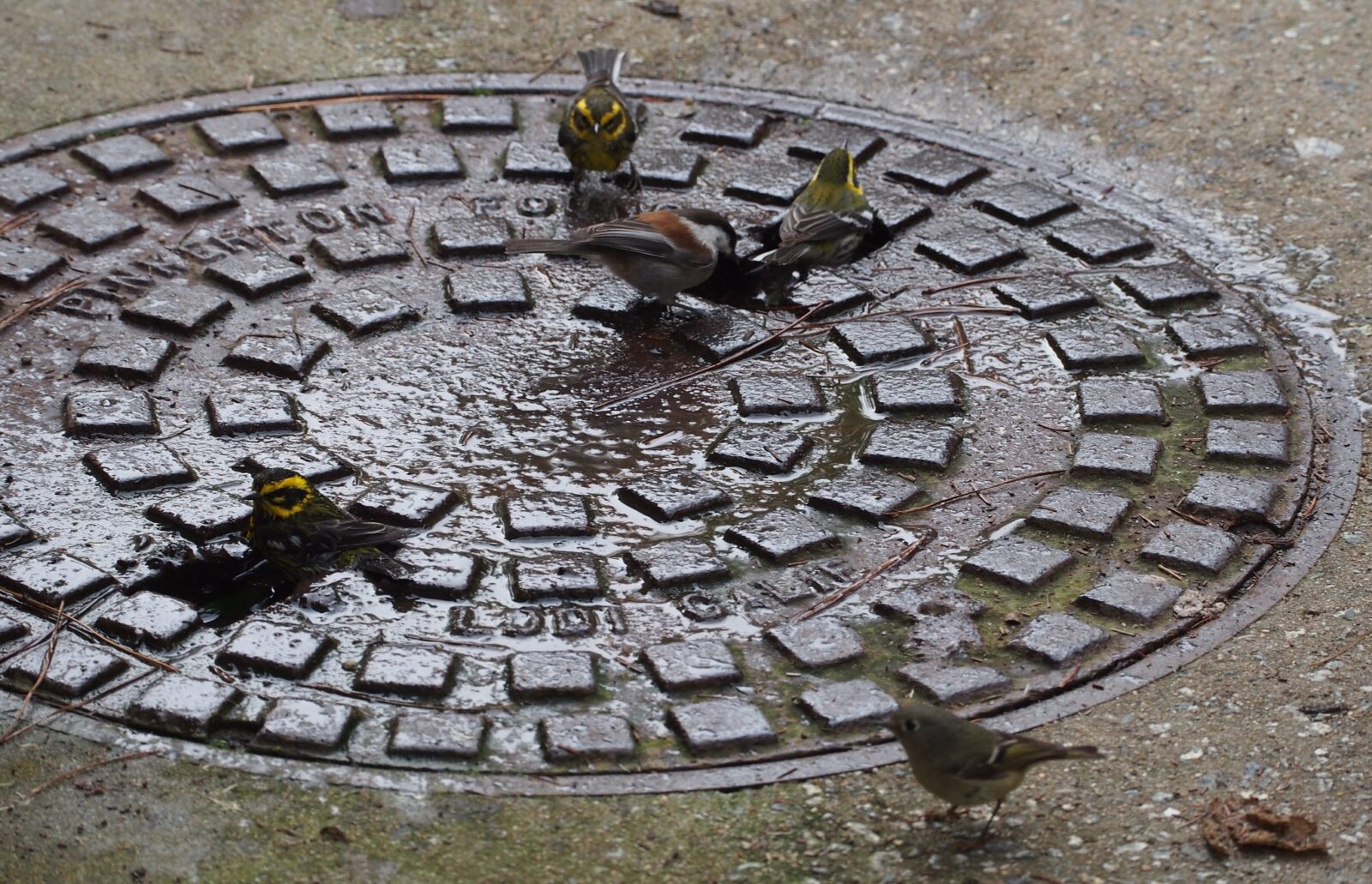
A turkey vulture sits in the scorching sun a few miles from Mount Diablo as waves of heat rise from the asphalt below. Luckily, it’s a master of urohidrosis—the art of defecating on oneself to stay cool.
Trickle, trickle—down a scaly leg it goes. As the excrement evaporates, it cools the bird’s legs, much like the produce-aisle misters that rejuvenate withered carrots. Repeat defecations coat the turkey vulture’s legs in a white buildup, a sign of thermoregulation in action (this poo provides bacterial resistance, too). It’s just one of many strategies these birds have for staying cool.
Though some may judge, behaviors like these are of vital importance when heat waves hit and birds are forced to contend with extreme conditions—especially given how humans have altered the landscape. Bay Area temperatures, especially near the coast, are usually mild enough to not threaten local birds—and may be a respite for those whose migrations take them through hotter areas—but the land heats up quickly just over the hills and in urban heat islands. And now that erratic weather patterns are becoming more frequent and the climate is warming, birds’ adaptations are being put to the test.
Forty miles from our vulture, a great blue heron collects twigs and small branches. She carries them 70 feet up and deposits them in her rookery nook near the ponds at Eden Landing Ecological Preserve, about five miles from Union City. Had she been human, she would have surely been sweating. But she is a great blue heron, and birds—like other reptiles—don’t sweat.
Instead, beak open, the heron gulps air as she pauses between trips. Her throat—also called her gular area—fluctuates rapidly, like the surface of a speaker when beats are set to full blast. As water evaporates through her open beak, her body cools, and she continues constructing her nest. Gular fluttering, as this behavior is called, is also seen in birds such as poorwills, cormorants, and even chickens—though it is absent in others such as songbirds and gulls. It’s like a super-efficient kind of panting that uses far less muscle movement. (And birds can pant, too. Like dogs.)
Nest completed, the great blue heron lays an egg; she’ll produce one every two days. Then, she sits and waits. At times, she spreads her wings to further shield her incubating eggs from the sun—and for good reason. On extremely hot days, exposed eggs can quite literally bake in the direct sunlight. Researcher Kristy Dybala, an ecologist at Point Blue Conservation, said that, when monitoring black-necked stilt and American avocet nests in the marshes of the South Bay, “that was one thing we would definitely worry about.”

A month passes at the rookery, and now the nest is full of stringy-feathered, large-beaked heron hatchlings looking like fuzzy, old-man dinosaurs. Like their parents, these young herons can flutter their gular areas, yet these nestbound chicks still require a shady parental wing-umbrella when it gets hot. In places where temperatures reach dangerous extremes, some bird parents—especially if already stressed or sick—have been known to abandon nests and nestlings in order to seek shade.
Like us, birds also keep cool by chilling out during the hottest parts of the day, flying to cooler places (often away urban heat islands), or bathing and soaking their feathers in water. Black-necked stilts soak their feathers in the shallows, then return sopping wet to their nests to cool their chicks (kind of like this iconic Planet Earth scene).
Many baby birds stay hydrated by eating juicy grubs. But the grubs are only there when enough water is around to support them. Water has the capacity to “supercharge the whole ecosystem,” says Dybala, and its presence or absence can determine how a bird, or a flock, fares during a summer of extremes. “Heat plus drought together are this synergistic problem,” she says. Add fire to that mix, and it’s even worse.
Katie LaBarbera, science director for the landbirds program at the San Francisco Bay Bird Observatory, witnessed that firsthand near the height of 2020’s extra-destructive fire season. Many birds captured at the observatory’s banding station in Milpitas, strangely, weren’t fighting back like they normally would when caught in a net. They seemed listless—not looking at anything, not paying attention to the scientists who held and measured them. “At that point, we stopped measuring, and we just said, ‘OK, you gotta go and recover,’ ” LaBarbera says.
There’s no getting around it: “To deal with the heat, you need water,” LaBarbera says. Both the heron’s gular fluttering and the vulture’s pooping require it. But water can be hard to come by.


We humans have engineered our landscapes in ways that make water less accessible to birds. We have dammed waterways and diverted streams, often “with flood control and water supply in mind,” not bird habitats, Dybala says. When rivers are simplified in this way, the bankside mosaic of varied habitats is also simplified, reducing its value for birds looking for a home.
Three billion birds have vanished from North America since the 1970s. Those that remain often live in fragmented habitats, subject to unpredictable climatic extremes. The difficulty of summer survival, for birds, is “everything on top of everything,” says LaBarbera. So the next time you see a finch flitting to a dripping garden faucet, or a chickadee drinking from the grooves of a manhole cover, or the black-crowned night herons raising their young in the heart of downtown Oakland—know that, as LaBarbera puts it, “these are birds trying to survive in the crevices in our world.”
How to help birds in summertime
- Provide water. But rinse and refill all water sources, including bird baths, every day, and scrub weekly. Don’t leave water out where outdoor cats roam.
- Leave nests alone. If you see them, do not approach or disturb them.
- If you have a yard, consider letting some grass grow taller. The more built up the greenery, the better for birds. Cultivate a diversity of native plants. Avoid using pesticides. Don’t trim branches during breeding season.
- Clean bird feeders once every two weeks. Keep water and feeders far from windows.
- Bird-safe windows to prevent collisions. Here, here, and here are some examples.
- Don’t feed wildlife when out in nature. Even items like bread can make birds sick.
- Pick up and throw away trash to prevent entanglement and ingestion.
- Keep cats indoors and dogs leashed. Cats kill more than 2 billion birds a year in the US.
- If you see a bird or other animal in distress, call your local wildlife center. Animal Help Now is a good resource for this.




